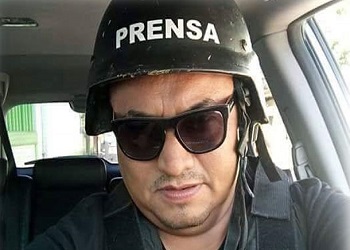The murder of a Chihuahua-based correspondent marks the third killing of a journalist in Mexico this month, a wave of targeted violence for which organized crime may be responsible that also reflects more general trends of rising insecurity.
Miroslava Breach Velducea, the Chihuahua correspondent for the national Mexican news outlet La Jornada, was gunned down in her car on March 23 by unknown assailants as she exited her house to drive her son to school, reported Proceso.
Breach was struck by eight 9 mm bullets at close range, according to La Jornada, suggesting an execution-style killing.
During her career, the journalist had spoken out against human rights violations and the negative impacts of drug trafficking. Among the most recent subjects she investigated was the displacement of hundreds of familes by drug trafficking organizations in Chihuahua, and organized crime’s infiltration of local elections.
Breach’s death marks the third killing of a journalist this month in Mexico. It was preceded by the slaying of Ricardo Monlui Cabrera in Veracruz on March 19; the journalist was shot at pointblank range while exiting a restaurant with his family, reported La Jornada. In 2010, Monlui’s son had denounced being kidnapped, shot and left for dead by municipal police.
And on March 2, Cecilio Pineda Brito was assassinated by two men on a motorcycle in the state of Guerrero. Pineda, who covered the crime beat, had survived a previous attempt on his life in 2015 and had repeatedly received death threats since then. The Guerrero State Attorney General Xavier Olea Peláez said that organized crime was behind his murder, according to El Universal.
InSight Crime Analysis
It is too early to establish with certainty the responsibility of Mexican organized crime in the three murders, amid a nationwide increase in homicides. Nevertheless, at least two of the killings — those of Miroslava Breach and Cecilio Pineda — appear to form part of a trend of journalists targeted for their coverage on crime-related issues. According to the Committee to Protect Journalists (CPJ), 74 percent of journalists killed in Mexico since 1992 covered crime, 29 percent covered corruption and 24 percent covered politics.
Along those lines, Marcela Turati Muñoz, an award-winning reporter for the Mexican news outlet Proceso, told InSight Crime that it was impossible to confirm that organized crime was directly responsible for these killings. But Turati also pointed out that it is just as plausible that the assassinations have to do with political power struggles involving corrupt local politicians and businessmen as it is that they have do with drug trafficking cartels.
“It is easy for many assassins in these areas [where the journalists were killed] to disguise their crimes as the work of organized crime, because they know that no one will thoroughly investigate if the crime presents organized crime characteristics,” Turati wrote in an email.
“In Chihuahua, for example, there aren’t only cartel disputes, there is also an ongoing political dispute, a political readjustment. And in each of these three states [Guerrero, Veracruz, Chihuahua], links between politicians and cartels come to light,” she added.
In March 2016, Breach had written specifically about these links in the state of Chihuahua, revealing the family ties between local candidates for elections and criminal groups.
SEE ALSO: Mexico News and Profiles
Contacted by InSight Crime, Carlos Lauria, the Program Director and Senior Americas Program Coordinator for CPJ, echoed some of Turati’s points.
“One of the problems compounding the violence against journalists [in Mexico] is the collusion between criminal groups and local politicians, local police or even sometimes the judiciary,” Lauria told InSight Crime.
But Lauria also noted that violence against journalists in Mexico “comes and goes in waves, and is sometimes more a reflection of a generalized violence than an actual increasing trend of homicides of journalists.”
Veracruz, a hotspot for journalist killings, is also undergoing a significant criminal evolution following the fall of the administration of former Gov. Javier Duarte, who allegedly engaged in massive corruption during his time in office in addition to having suspected links to crime groups. The International Crisi Group went so far as to describe Veracruz after Duarte’s run in office as descending into a “state of terror.”
Chihuahua is also facing rising levels of violence, and Guerrero has long been one of Mexico’s most crime-ridden, insecure states.

